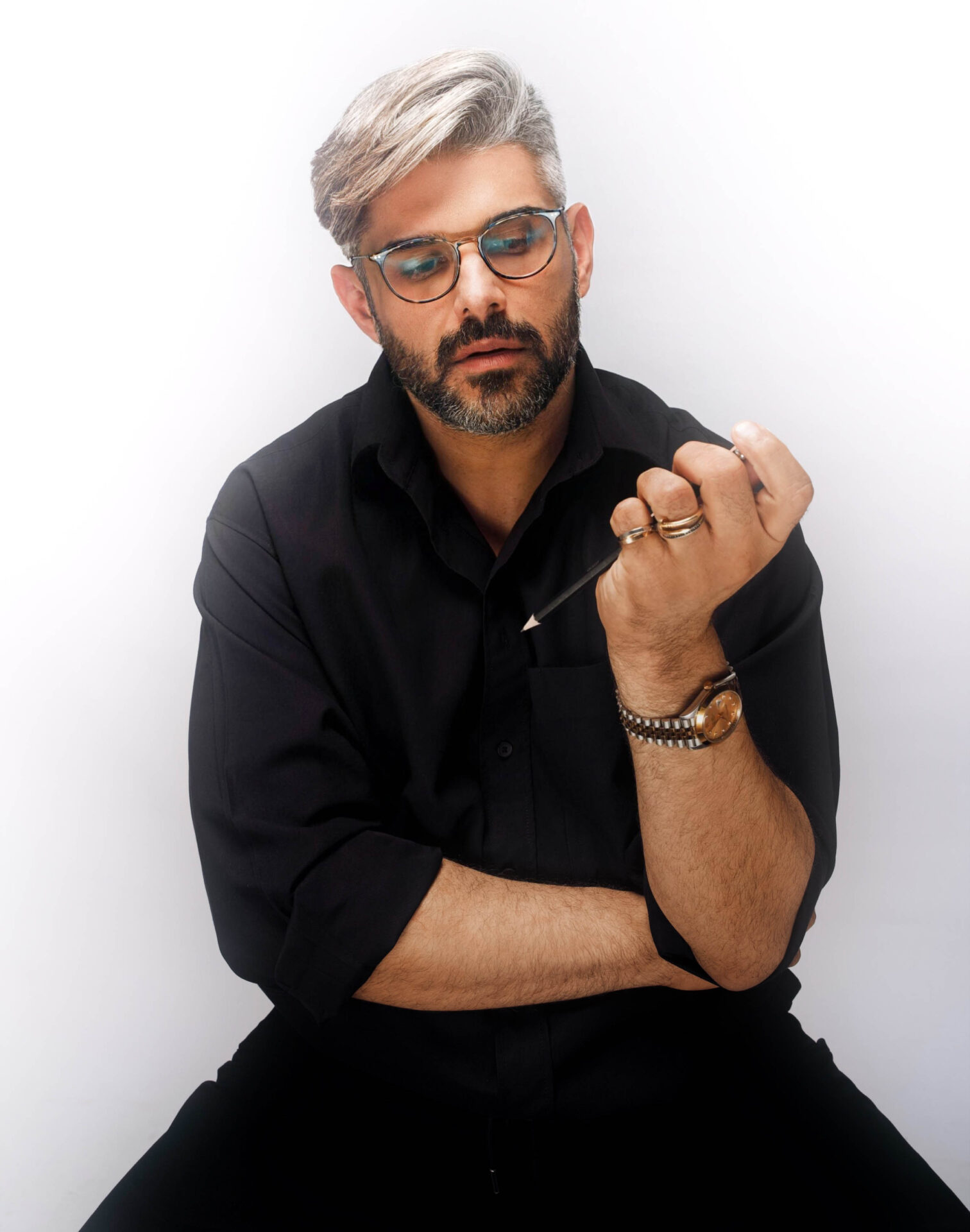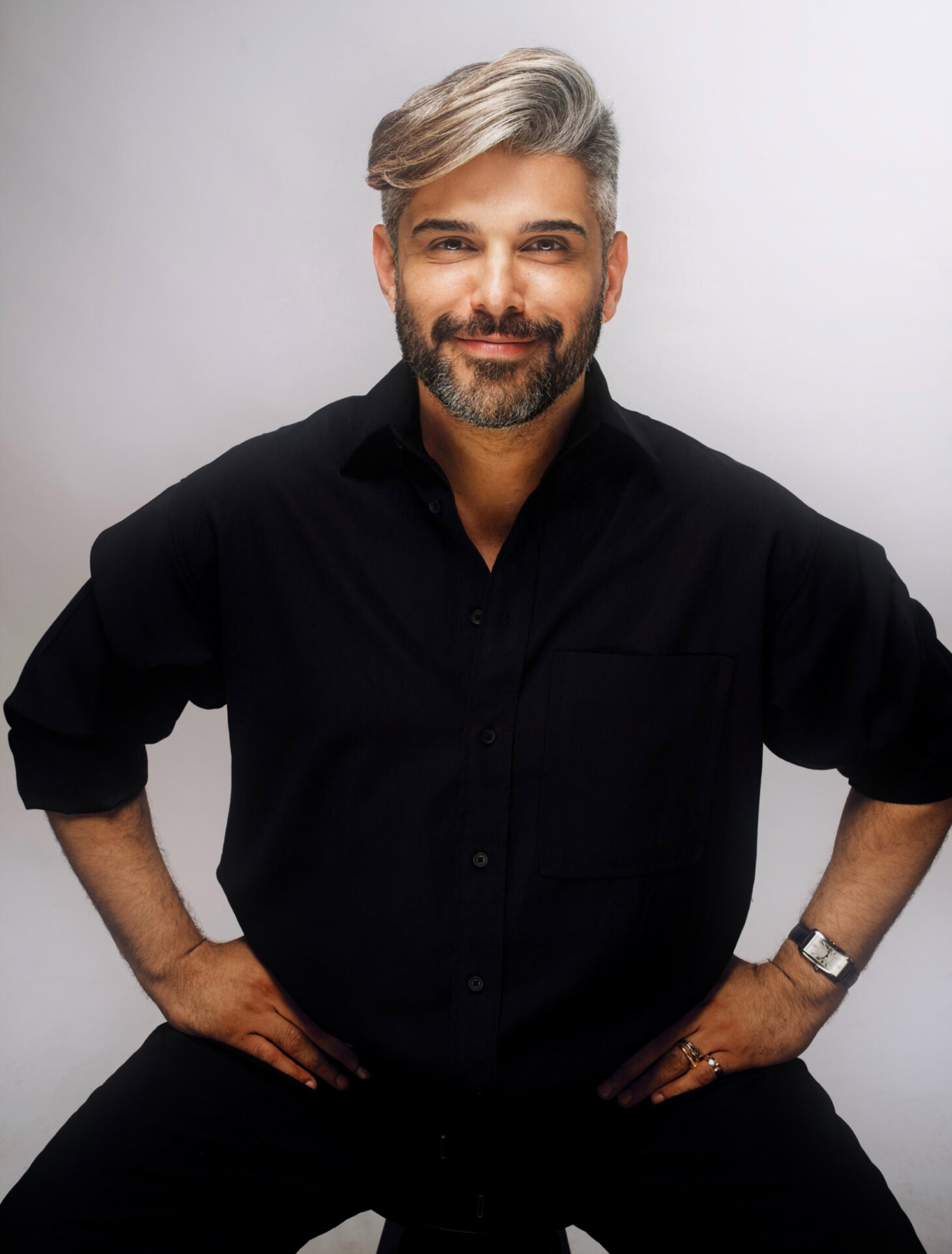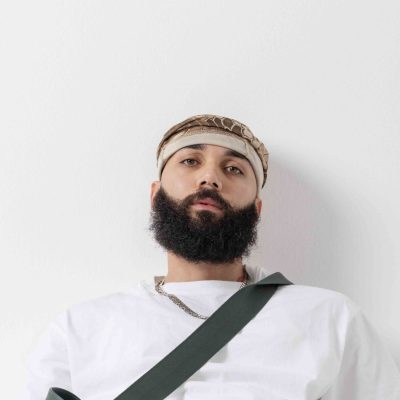In this edition of CP Magazine, we are excited to present an exclusive interview with Yousef Al-Samhan, one of Kuwait’s most distinguished interior designers. As the founder and creative director of his own design studio, Yousef has built a reputation for crafting spaces that transcend mere aesthetics, offering deeply personal and unique experiences for his clients. His work seamlessly blends contemporary trends with Kuwaiti cultural heritage, creating timeless interiors that reflect both global design sensibilities and local traditions.
Yousef’s journey into interior design began at a young age, sparked by his fascination with how spaces influence emotions and daily life. Over the years, his formal education and hands-on experiences have shaped a design philosophy rooted in both creativity and functionality. His studio’s approach stands out in the Kuwaiti market for its emphasis on bespoke designs, each meticulously tailored to reflect the personality and lifestyle of the client. Through a combination of traditional elements and modern innovation, Yousef crafts spaces that tell a story, making each project a true reflection of those who inhabit it.
In this interview, we delve into Yousef’s creative process, the challenges of managing a growing studio, and his views on the future of interior design in Kuwait. Join us as we explore the mind of Yousef Al-Samhan, a designer who continues to push boundaries and create environments that leave a lasting impression.

Can you tell us a bit about your journey into interior design and what sparked your interest in this field?
My journey into interior design began at a young age. I’ve always been fascinated by how different environments can shape our emotions and daily experiences. As a child, I loved rearranging furniture and playing with color schemes in my room, not knowing then that this passion would turn into a career. Later on, I pursued formal education in design, where I realized that interior design is a perfect balance between art and function. It allows me to merge creativity with practicality, and that’s what drew me to this field—the opportunity to craft spaces that not only look beautiful but also improve the quality of life for those who use them.
How did your education and early experiences shape your approach to design today?
My education provided me with a strong foundation in design principles, such as proportion, scale, color theory, and the importance of functionality. However, it was my early hands-on experiences, such as internships and initial projects, that truly molded my design approach. Working on real-world projects taught me how to listen to clients, understand their needs, and translate their visions into functional designs. These experiences helped me realize that the best designs stem from collaboration and problem-solving. Over time, I developed a process that combines my formal training with practical solutions that respond to the individual needs of each project.
What makes your design studio unique compared to others in the Kuwaiti market?
Our design studio sets itself apart by offering a highly personalized experience for each client. While many studios in the Kuwaiti market may focus on trends or standard practices, we pride ourselves on creating bespoke designs that are truly reflective of our clients’ personalities and lifestyles. Additionally, we emphasize the integration of local cultural elements with modern, global aesthetics. This combination allows us to craft spaces that are not only unique but also timeless, balancing tradition and innovation in a way that resonates with the Kuwaiti market.

How do you define “creating unique experiences” through your designs, and what does that mean to you personally?
Creating unique experiences in design means going beyond the visual. It’s about crafting an environment that resonates with people on an emotional level. For me, a well-designed space is one that evokes feelings, whether it’s comfort, inspiration, or a sense of belonging. Each design should be a reflection of the people who inhabit the space, and it should enhance their experience of living or working in that environment. Personally, this concept means that I approach each project as an opportunity to tell a story, with every detail—color, texture, layout—contributing to that narrative.
How do you balance traditional Kuwaiti design elements with contemporary global trends?
Balancing traditional Kuwaiti design elements with contemporary trends is about respecting heritage while embracing innovation. I often incorporate elements like traditional patterns, calligraphy, or the use of natural materials like wood and stone, which are deeply rooted in Kuwaiti culture. These are then paired with modern design principles—clean lines, open spaces, and innovative materials—to create a harmonious blend. This fusion ensures that the designs are culturally relevant but still fresh and forward-thinking, appealing to both tradition and modern tastes.
What are some of the biggest challenges you’ve faced managing your design studio, and how did you overcome them?
One of the biggest challenges in managing my studio has been coordinating between various stakeholders, from clients to contractors to suppliers, all while ensuring that projects stay on schedule and within budget. Miscommunication and unexpected delays can complicate things. To overcome these challenges, I’ve implemented clear communication protocols and project management systems that keep everyone aligned. Building a reliable team has also been crucial—having people I trust to manage different aspects of the business allows me to focus on the creative side while ensuring that the operational side runs smoothly.
Which materials or textures do you find yourself gravitating toward, and why?
I often find myself drawn to natural materials like wood, stone, and linen. There’s a timeless quality to these materials that instantly brings warmth and authenticity to any space. I also love working with contrasting textures—pairing soft fabrics like velvet with harder elements like metal or glass creates a dynamic interplay that makes a space feel balanced and layered. These materials not only enhance the aesthetic appeal of a room but also add a tactile dimension that invites people to engage with the space on multiple levels.

What inspires you outside of the world of interior design? Are there hobbies or activities that feed your creativity?
Travel is one of my biggest sources of inspiration. I love exploring new cities, immersing myself in different cultures, and observing how people live and design their environments across the world. Whether it’s the vibrant colors of a marketplace or the intricate architecture of a historical building, I often find myself taking mental notes that later influence my design work. In addition to travel, I enjoy photography and nature walks—both allow me to see beauty in the everyday, whether it’s in the way light falls on a surface or the organic shapes found in nature. These experiences refresh my perspective and often inspire new ideas.
How important is cultural identity in your designs, and how do you balance local heritage with modern influences?
Cultural identity plays a vital role in my design philosophy. I believe that a well-designed space should reflect the unique heritage of its location while also incorporating modern elements that make it functional for today’s lifestyle. In my work, I often integrate local craftsmanship, traditional motifs, or regional materials, blending them with global design trends. This balance allows me to create spaces that feel both rooted in tradition and contemporary, ensuring that they resonate with the cultural context but also appeal to a modern audience.
What’s your favorite part of the design process, from concept development to final execution?
The concept development phase is my absolute favorite. It’s when ideas start to take shape, and the vision for the project begins to form. I love collaborating with clients during this phase, understanding their needs, and brainstorming creative solutions. It’s a period of boundless creativity, where anything seems possible, and we can explore various design directions. While the final execution is always exciting—seeing everything come to life—it’s the initial spark of an idea that drives the entire process and keeps me passionate about what I do.
What advice would you give to aspiring interior designers who want to create a unique design signature of their own?
My advice would be to stay curious and never stop experimenting. Design is a field where innovation thrives, and to develop a unique signature, you need to constantly push boundaries. Don’t be afraid to step outside of your comfort zone and try new techniques, materials, or styles. At the same time, focus on developing a deep understanding of design fundamentals. When you have a strong foundation, you can confidently explore creative expressions that reflect your personal style. Finally, always keep learning—whether from other designers, nature, or the arts—because inspiration can come from the most unexpected places.
How do you ensure that each space you design tells a story and leaves a lasting impression on its users?
I believe that every space should be a reflection of the people who will use it. To ensure that a design tells a story, I start by deeply understanding my clients—their lifestyles, tastes, and how they want to feel in their space. From there, I weave these insights into the design, selecting materials, colors, and layouts that resonate with their personal narrative. I also pay close attention to detail, as it’s often the small, thoughtful touches that make a space feel complete and memorable. By focusing on these elements, I’m able to create environments that not only meet functional needs but also leave a lasting emotional impact.

As a studio owner, what leadership skills have you found most essential in managing a team of creative minds?
Leading a team of creative minds requires a delicate balance of providing direction while giving individuals the freedom to express their ideas. Communication is key—I make sure that everyone is on the same page about project goals while encouraging open dialogue and collaboration. Empathy is also crucial, as each team member brings their own unique perspective and strengths to the table. By fostering a supportive and inspiring environment, I empower my team to take ownership of their work, which leads to more innovative and successful outcomes.
Can you tell us about a design trend you think is overused or one that excites you right now?
One trend that I find overused is minimalism taken to an extreme, where spaces feel cold and devoid of personality. While I appreciate the clean lines and simplicity of minimalist design, I believe that a space should still feel warm and lived-in. On the other hand, I’m excited about the growing trend of biophilic design, which integrates nature into indoor environments. This trend not only creates beautiful, serene spaces but also has tangible health benefits, such as reducing stress and improving air quality. It’s a perfect example of how design can enhance both aesthetics and well-being.
How do you recharge creatively when you feel stuck or uninspired?
When I hit a creative block, I find that stepping away from my work helps me recharge. I’ll engage in activities that have nothing to do with design—whether it’s going for a walk in nature, visiting an art gallery, or even just spending time with friends and family. These breaks allow me to reset my mind and often lead to unexpected sources of inspiration. I also revisit past projects or design books for a fresh perspective. Sometimes, simply changing my environment or looking at a challenge from a different angle is enough to spark new ideas.
Your message for us at CP magazine.
I’d like to express my gratitude to CP magazine for giving me the platform to share my story and my passion for design. It’s wonderful to see publications like yours supporting creative professionals and sparking conversations around design, art, and culture. Your work helps connect the design community and inspires both industry experts and enthusiasts alike. I’m honored to be part of this issue, and I look forward to seeing how CP magazine continues to shape the narrative of design in the region and beyond.








